
Fate/Samurai Remnant brings Waxing Moon brawls by night, and bustling Edo life by day
The Fate franchise is often billed as "The Ultimate Tale of Heroes", and it can certainly give that impression. The original concept of resurrecting Heroic Spirits from history and legend to battle it out as superpowered "Servants" bound to a human Master has held across now-dozens of distinct brands and subseries, each with a particular twist on the formula. And with Fate/Samurai Remnant, veteran developer Omega Force seeks to blend a new, historically-grounded Fate story with the studio's roots in the over-the-top Musou (a.k.a. Warriors) action games.
Going by the few hours I received with a preview build of the game, the results are promising.
The Fate/Samurai Remnant build I was given access to on PC covered the beginning of the story and a significant chunk of the first chapter. This preview build felt quite complete: It contained a full English localization, Japanese voice acting (with English subtitles), and seamless controller support, complete with distinct button prompts for PS5 gamepads, something I don't see as often as I'd like in multiplatform titles. The performance was equally smooth, with no noticeable dips in framerate on my PC, even with various programs running in the background.
It also gave me full, natural access to the game's systems up to a certain cutoff point in the story. My time with the game was substantial enough that prior to that cutoff, I even wondered if I had somehow mistakenly been given a copy of the final release more than a month in advance, and not the typical "media build" trotted out for previews.
The notes provided by Koei Tecmo said that the build contained "about 3 to 4 hours" worth of content to play, including side quests and miscellaneous objectives. But by the time I'd hit the cutoff, Steam told me I had more than 7 hours clocked in, with what seemed like plenty of game left to go through from there.
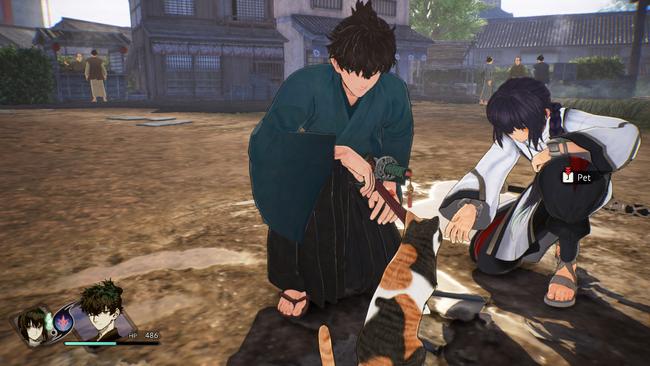
As has been reported in our other coverage of the game, Fate/Samurai Remnant stars Miyamoto Iori, the adopted son and disciple of legendary swordsman Miyamoto Musashi. Unable to properly inherit Musashi's famed Niten Ichiryu style of swordsmanship due to his teacher's death, Iori has been scraping by by as a freelance bodyguard in Asakusa, a neighborhood of Edo (as Tokyo was known back in 1651).
One night, Iori is inadvertently selected to become a participant in the Waxing Moon Ritual, a secret magical contest of titanic scale. The involves seven pairs of Servant and Master, locked in a deadly battle royal over possession of the "Waxing Moon", an object with the power to grant its holder's greatest wish.
Iori's Servant for the Waxing Moon Ritual turns out to be Saber, an androgynous youngster who dresses in archaic garb, refuses to say their True Name, and is immediately mistaken by Iori's adoptive sister Kaya to be his new girlfriend.
Though Saber's arrival mirrors the iconic introductory scene from Fate/Stay Night, the Saber of Samurai Remnant is markedly different from the original. Where Artoria (or Altria, depending on who's doing the localization) was noble and stoic, this Saber is impetuous, cocky, and distractible. They and Iori clash often, particularly over Iori's refusal to risk innocent life by unleashing Saber's full potential - a chafing straitjacket when you consider the apparent destructive power of Their water-based Noble Phantasm.
And yet their bond builds over time as they crisscross the city seeking clues to who's behind the Waxing Moon ritual and how to end the dangerous contest. Saber comes across less like an aloof hero that's slow to trust and more like a new sibling, powerful in battle but dependent on Iori for the pleasures of home cooking and the wonders of the modern metropolis that is 17th-century Edo.
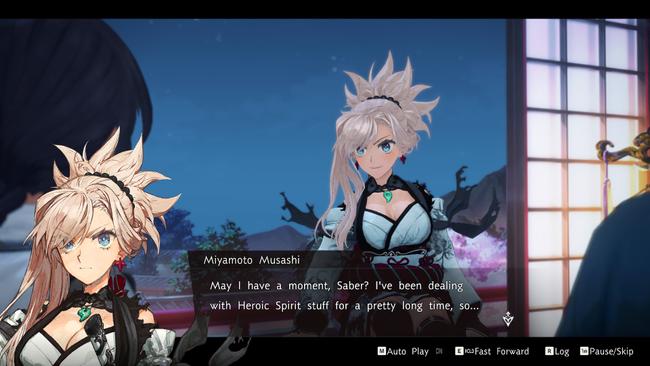
Edo itself stands out too, providing a distinct sense of place for Fate/Samurai Remnant. The game's story is set in a particularly liminal period of Japanese history, where the chaos of the Sengoku period is fading from living memory, but the broader tranquility of the Tokugawa Shogunate is paid for with scenes of shocking bloodshed and sacrifice at the fringes.
References are made in dialog and the in-game codex to the Shogunate's violent persecution of Japan's Christians and its vicious suppression of dissenting internal powers. It's quite the experience to look up a few of the names involved in the game's narrative and wonder about how they'll figure into the story, knowing what they do in real-world history.
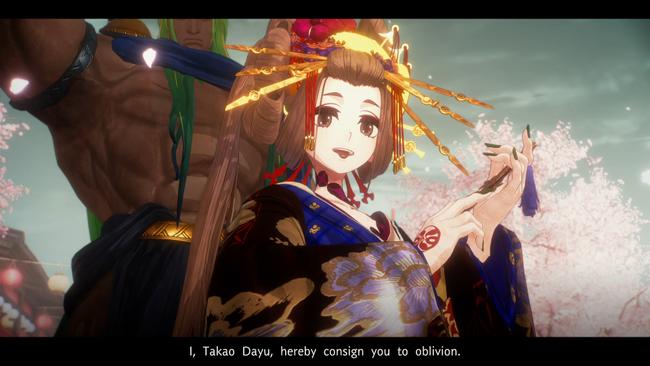
Other fun callouts also include catering to fans of the other Fate stories, ones who may resent the tendency of newer games like Fate/Grand Order to put the True Names of their Servants front and center. After all, in the classic stories, a Servant's True Name was a really big deal, and finding out who they were in life often played a huge role in bringing them victory (or defeating them). And though at least a few of the Servants here are easily recognized, the story at least plays things closer to its chest when it comes to newer characters and ones who don't yet have their identities spoiled by franchise siblings.
Structurally, Fate/ Samurai Remnant comes across as a somewhat stripped-down version of RGG Studios' earlier Yakuza titles. Players get to roam open areas patterned after period urban Japanese neighborhoods, getting to know their layouts through repetition. The streets themselves bustle with commoners, NPCs, and random battles.
Though the portion of the game I saw didn't seem to have much in the way of Yakuza's famous substories, the areas still felt alive, thanks to their layout and the goodly number of minor tasks to take on, like eating at food stalls, petting stray dogs and cats for a health boost, and locating neighborhood shrines to pay respects to. The random battles, which were mostly there to use for combat practice and resource-gathering, were usually against street thugs or monsters attracted by the Waxing Moon Ritual.
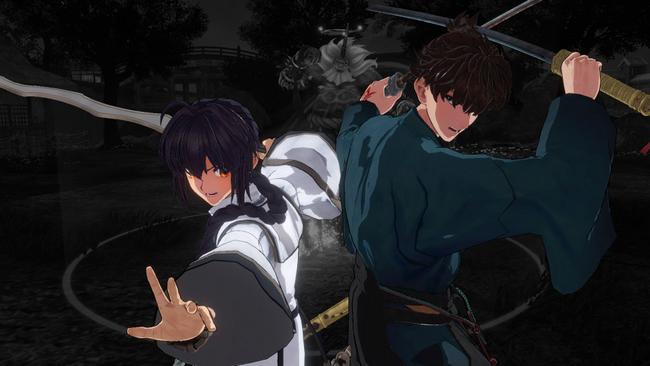
This combat is where Omega Force's Warriors pedigree shines through the most. Unlike more recent Koei Tecmo-published titles like Wo Long or Nioh, or even Omega Force's own Wild Hearts, combat in Fate/Samurai Remnant takes after the Warriors games most of all.
Most moves consist of hammering a light attack button and ending the chain with a heavy attack, with the heavy strike's placement in the sequence determining which flashy move closes the combo. This shouldn't surprise, considering Director Ryota Matsushita counts work on the likes of Hyrule Warriors: Age of Calamity, Samurai Warriors: Spirit of Sanada, and Dynasty Warriors 9 under his credits.
More moves can be unlocked on a skill tree, and Iori has access to up to five sword styles to use on his foes. Iori had access to two in the preview build, and each was tailored for different contexts. The Water form favors wide, sweeping strikes using two swords to clear out crowds. The sturdy Earth form is suited to handling tough enemies, thanks to a block-and-parry feature that negates stun animations and reduces incoming damage. Shifting styles mid-encounter is encouraged, as fighting in one style for a while lends an "afterglow" effect to the next style. For example, a Water afterglow increases the attack speed of Iori's strikes in Earth form.
Iori even has access to Magecraft spells, powered by gems dropped from slain enemies. The spells available range from a simple fireball attack to healing and buffing spells. The buffs are particularly helpful when Iori and Saber encounter enemy Servants. Servants are basically boss characters in isolation, each as fearsome as Lu Bu at Hulao gate.
Even exceptional human warriors like Iori stand little chance against even a single Servant without the aid of their own Servants. To that end, Iori can deploy Saber like a partner character, triggering screen-clearing special moves powered by "Affinity" that builds up between the two. A maxed-out Affinity gauge even allowed me to take temporary control of Saber, highlighting the sheer power differential between the two. Saber's own moves were unique, with their set of combos and spell effects ranging from a blast of bullet-like raindrops to a ranging tidal wave that can be steered around the field.
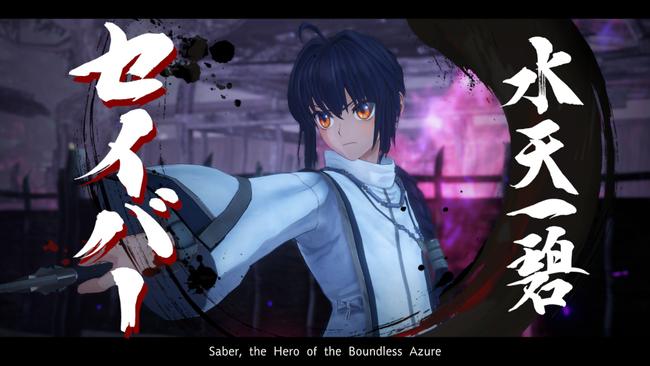
As Servants are the true stars of a Fate franchise story, there are plenty to get to know in Fate/Samurai Remnant. The game hosts at least fifteen Servants, and by the time the preview ended, I hadn't even met half of them. Some are part of the Waxing Moon Ritual, bound to one of the Masters like Iori is to Saber. Others are Rogues, summoned by chance and bound to areas of the city. One I got to meet was Tamamo Aria, the Rogue Rider of Ueno. A diminutive, love-starved version of fan-favorite Caster Tamamo-no-Mae, Tamamo Aria takes a shine to Iori, and their connection comes into play after the game introduces its strategic sub-mode.
In that mode, Iori and Saber must engage in a form of territory control, moving between leyline nodes about the city, and safeguarding their own nodes against enemies intent on capturing them. Tamamo Aria, when summoned, can increase the number of moves Iori can use to capture nodes, allowing more leeway in terms of strategy.
And as teased in the game's second trailer, none other than the King of Heroes himself shows up in Asakusa. This time, he's a Rogue Ruler with no interest in the Waxing Moon Ritual, but plenty of interest in promoting his textile wholesaling outfit, Babyloni-ya. With more Servants both playable and otherwise still to be introduced, Fate/Samurai Remnant won't be limited to just being the Iori-and-Saber show.
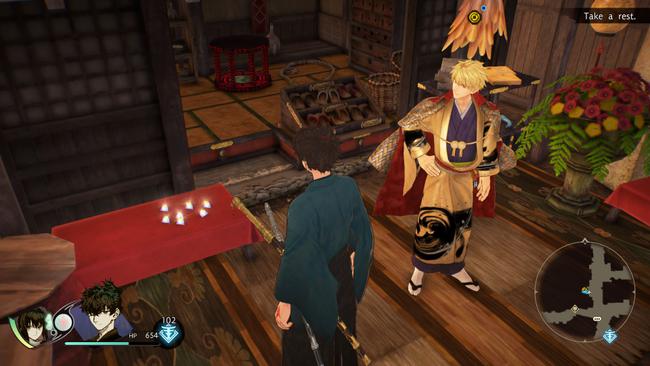
As if to put a point to that notion, the closing portions of the preview put me in control of Miyamoto Musashi herself, complete with a flashy Noble Phantasm that summons a massive Nio to tear apart her opponent. In Fate/Samurai Remnant, Musashi is summoned as a Berserker bonded to geisha Takao Dayo, superstar courtesan of the Yoshiwara pleasure ward. In an interesting exchange, Iori immediately recognizes this Musashi as a version of the now-dead man who was his adoptive father, a connection that this female, much younger-looking Servant version of Musashi - one familiar to many Fate/Grand Order players - acknowledged readily.
So far, Fate/Samurai Remnant is looking like a nice attraction for fans of the Fate franchise to dig into, as well as a compelling standalone action-RPG romp. Those who might've been disappointed by the thinner narrative in the last Fate-based brawler, 2019's Fate/Extella Link, will find more material to engage with, and a setting that adds some Edo-period flair to the now-familiar Holy Grail War template. And with appearances from Fate characters new and old in the offing, there's plenty to look forward to when the game comes out.
Fate/Samurai Remnant launches for PS4, PS5, Nintendo Switch, and PC via Steam on September 29, 2023.